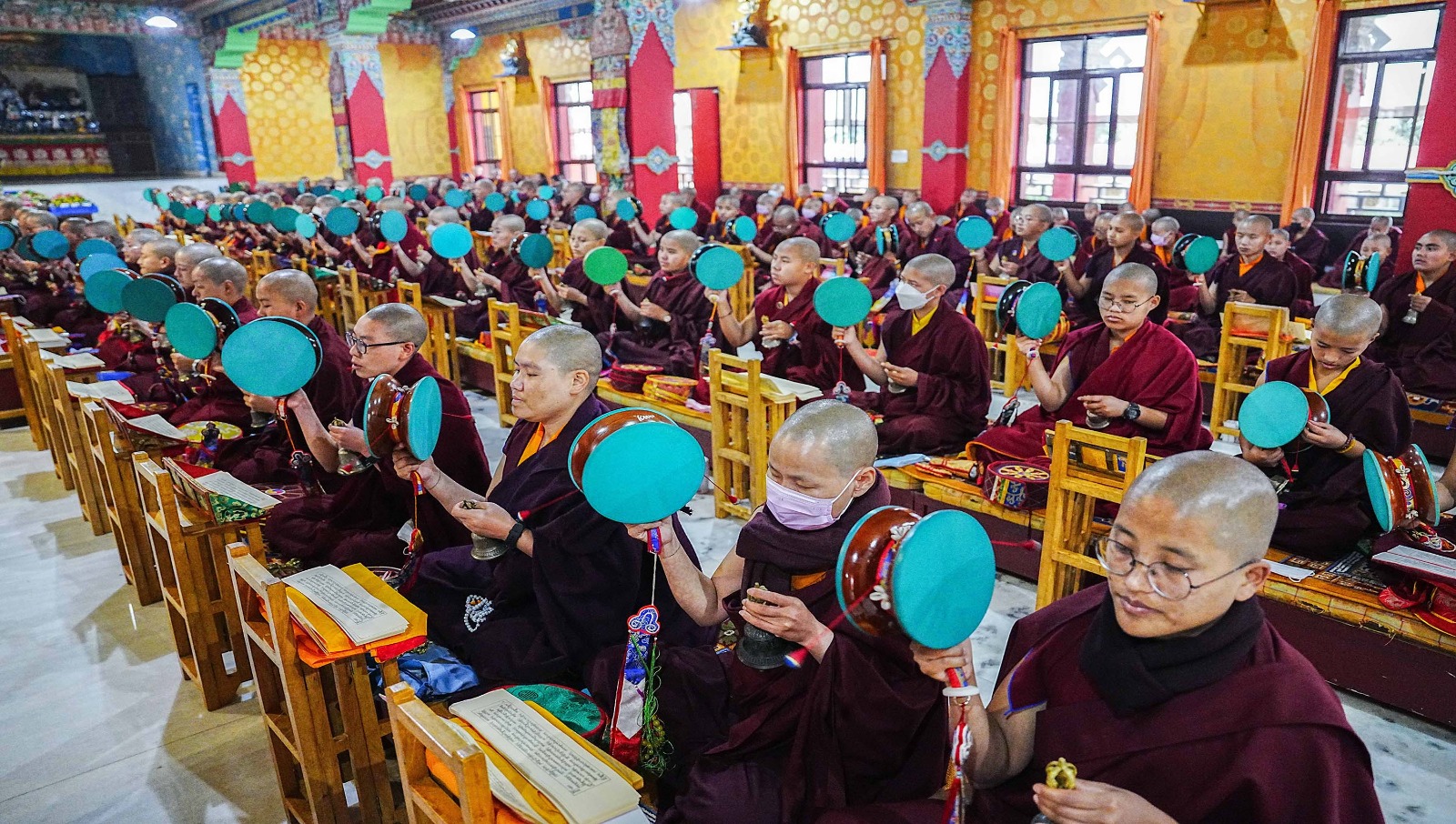Tergar Monastery Shine Hall
5 February 2024
སྐབས་བརྒྱད་པའི་འཕགས་མ་བདེ་བྱེད་མའི་དཔྱིད་ཆོས་ཀྱི་བཙུན་མ་རྣམས་ནས་གཅོད་ཀྱི་ཚོགས་ལས་ཡོན་ཏན་ཀུན་
འབྱུང་གསུང་བཞིན་པའི་བརྙན་ཡིན།
This day of Chöd practice has become one of the central rituals of the Arya Kshema Spring Dharma Gathering.
Chöd literally means " to cut" and the practice aims to cut through the practitioner’s attachment and ignorance, especially attachment to the body, ego-clinging and the dualistic idea of a self, and by doing this, lead to a realisation of emptiness. This practice lineage originated with Machig Labdrӧn, and of the eight practice lineages which reached Tibet from India, it is the only one founded by a woman. It is seen as a practice especially suitable for female practitioners and many have become skilful adepts.
The Karmapas have traditionally had a strong connection with the Chӧd practice, and the text used at the Arya Kshema is called Chöd: A String of Jewels, which was composed by Third Karmapa, Rangjung Dorje.
The ritual started at daybreak and lasted all day. Drupon Dechen Rinpoche acted as vajra master for the ritual.
The nuns in their yellow dharma robes sat in rows in the shrine hall, turning the special green Chöd drums in their right hands and ringing their bells with the left, providing a strange rhythm as background to the ritual. This had an extraordinary effect, both visual and sound-wise. The Chöd ritual also contains some complicated, haunting melodies, expertly led by the nun chant masters. Then, at points, the eerie wail of thigh bone-trumpets penetrated through the hall, conjuring up visions of charnel grounds, the traditional setting for Chӧd practice.


















